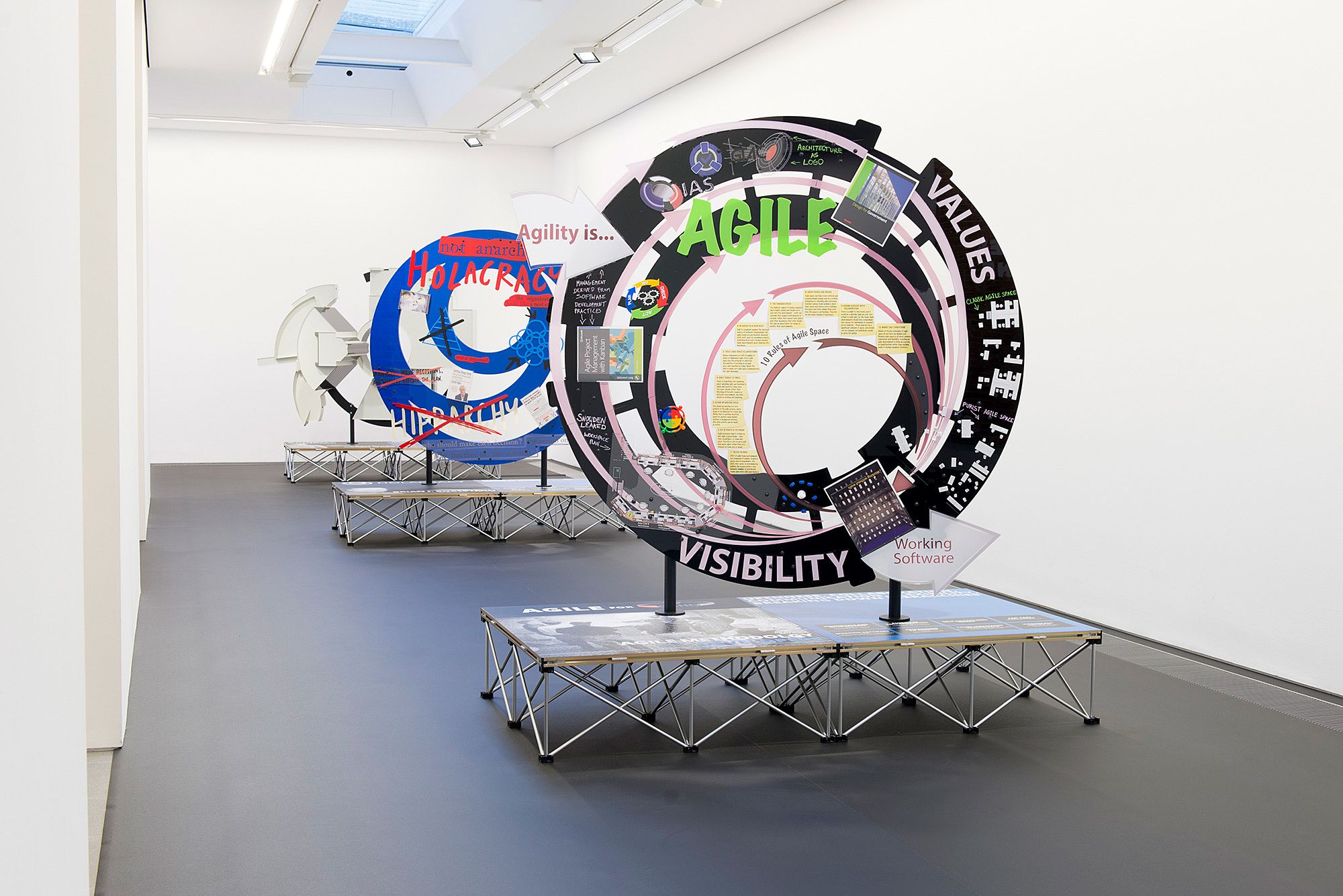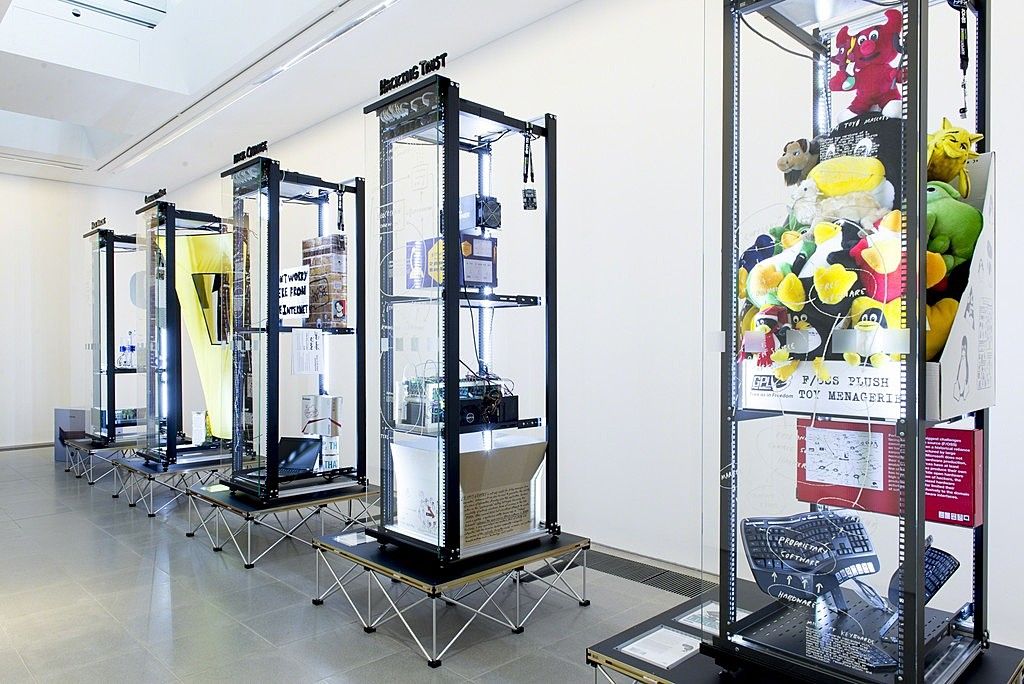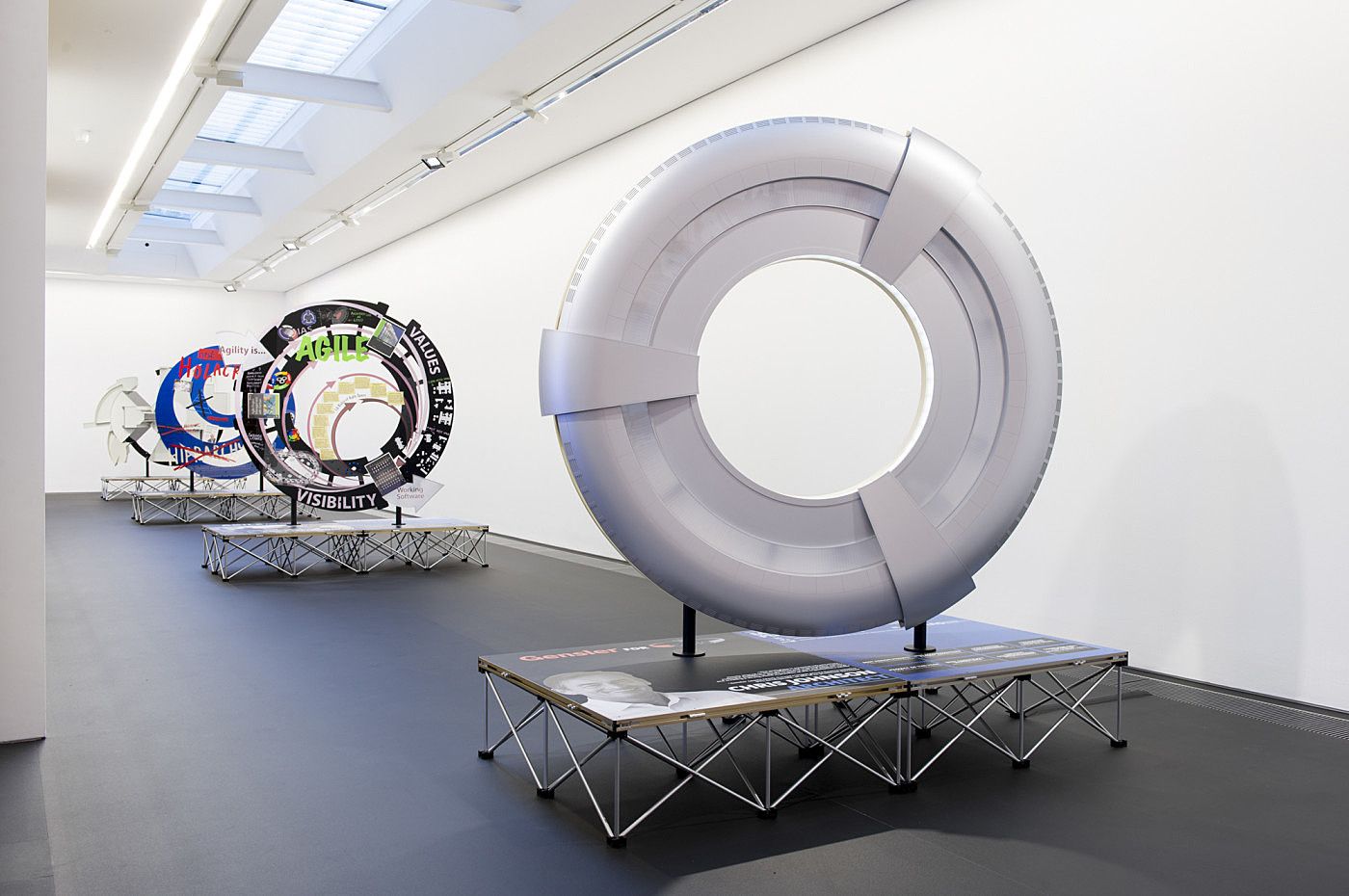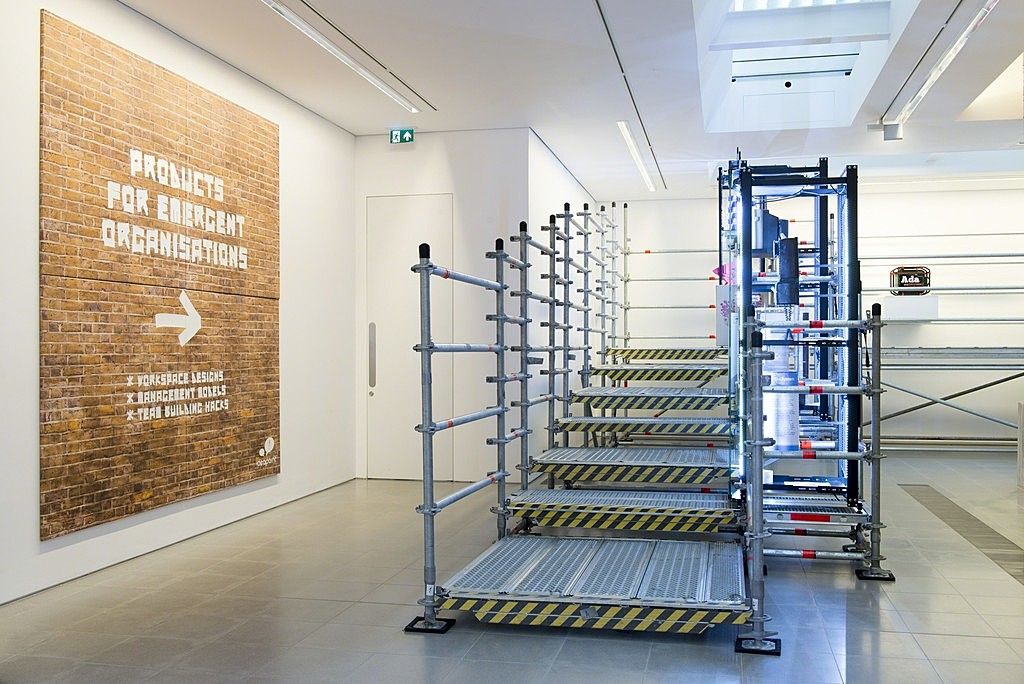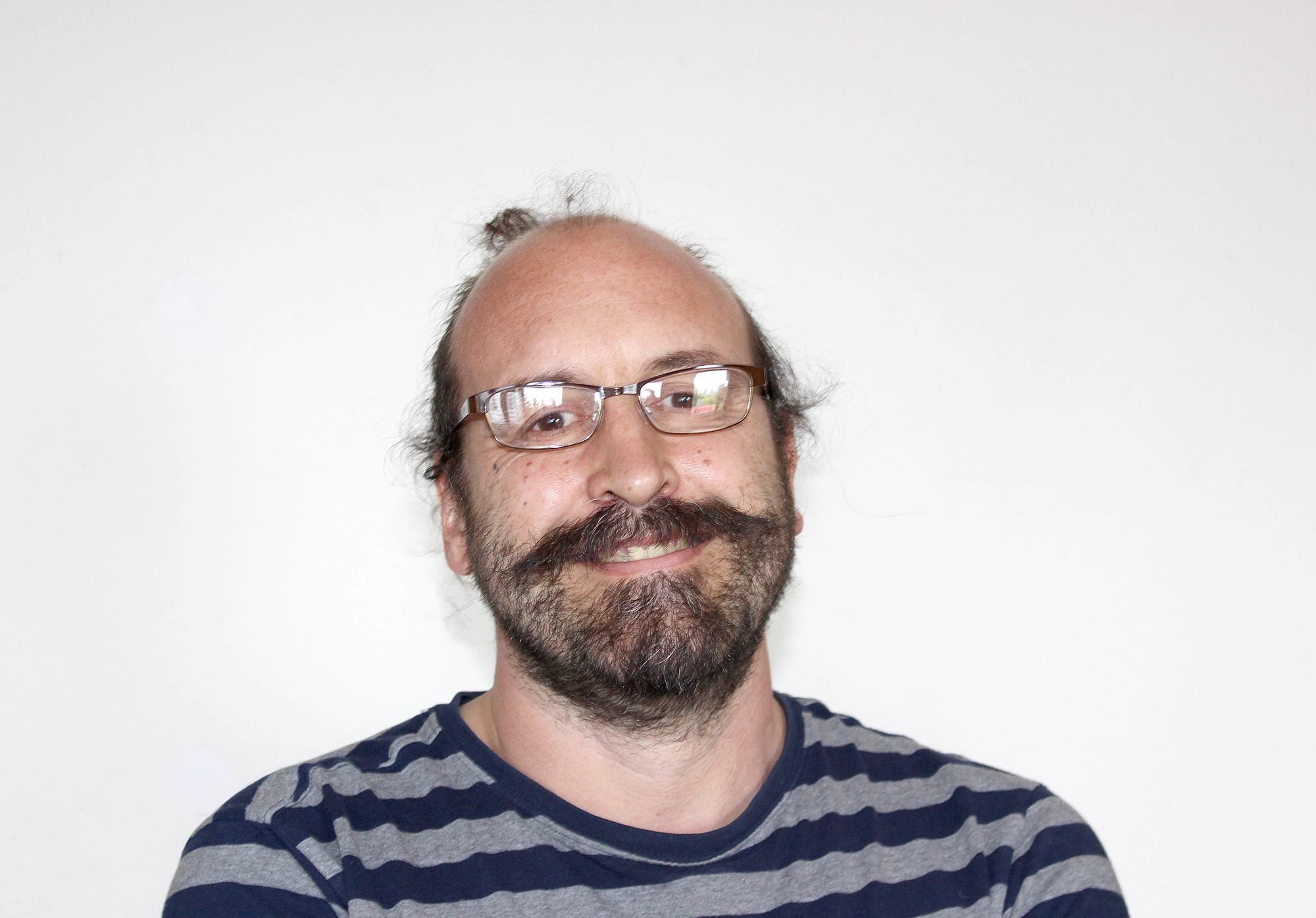Review: Simon Denny's 'Products for Organising'
Matthew Crookes on Simon Denny’s recent exhibition at Serpentine Sackler Gallery.
A graduate of Elam, as well as the Städelschule in Frankfurt – and the New Zealand representative at the 2015 Venice Biennale – contemporary kiwi artist Simon Denny has been based in Berlin for a number of years. I had the recent good luck to be in London while an expansive installation featuring his work was showing.
Denny’s practice has an ongoing fascination with technology of the recent past, and a concern with technological redundancy has been evident throughout his career. Early works dealt directly with the materiality of this obsolescence: a series of beach towels printed with old TV screen captures; casings of vintage cathode ray TV sets.
In his most recent book, In the Flow, critic Boris Groys distinguishes the present day from earlier historical periods, notably modernism, by asserting that our current age is fixated on its own contemporaneity. We’re absorbed by the ‘here-ness’ and ‘now-ness’ of the here and now. Denny’s show appears to acknowledge this obsession by displaying a show quite literally made up of the rapid redundancy of recent technology.
The assemblages are constructed from relics of the recent past. The printed instructions for ‘intelligent protest’ for example, whose authors insisted it be circulated Samizdat-style, illicitly photocopied and passed on by hand, is now incorporated into one display (presumably no longer a threat to the corporations or governments they were originally intending to subvert). A further implication arises as well: that such methods of circulation are themselves redundant, either because of better encryption technology, or the evaporation of a coherent will to resist.
This exhibition comes across as one of representation rather than presentation, and this is most apparent in the flattened sculptures that depict what appear to be 3D online graphics. The initial reaction is a question; why have these pieces been made at all? What are they doing that an online graphic wouldn’t or couldn’t? Within this show’s context it becomes clear that what they depict is not what they are, and not what they do in this space. Constructions of empty computer housing, some still-winking LEDs, the shouty graphics of corporate literature, line it like amusements on a pier, but the whole edifice appears to have been created to generate a feeling of significance, but one very much divorced from the content it alludes to.
Most of the work follows the same readymade assemblage pattern, except for the large, acrylic disc-like 3D sculptures in the foyer, which have clearly been custom made, possibly to order. The redundancy theme is evident here too, in making a 3D artefact, a representation, of something that exists only in virtual space, pointing up the transformative effect of mediation. The representation becomes the thing, whatever its subject.
In the underlying joke of these works, if we can use that term, online commerce may be the subject, but materiality is the target. The assemblages indicate a mechanism made up of the redundancy of the object and the shortcomings of a subsequent material transfiguration. Denny’s submission to the 2013 National Gallery Prize for Young Art at Hamburger Bahnhof (which consisted of an account of Kim Dotcom’s activities around the time that Dotcom became politically engaged in New Zealand, with his involvement in the Internet-Mana party) was more concerned with representation. The show came across as always much more about the depiction of Kim Dotcom than as an essay, in-depth as it was, on Dotcom as a public figure.
Making a display of redundant hardware and out of date software, or copyright debates from the last decade, not only underpins the relentless fluidity of cyberspace but also raises questions about the place and function of art in all this. How does something that captures and makes static, as fine art traditionally did and still does, fit into a world whose nature – constant flux – is the precise opposite?
This work refers to the corporate culture of the web, but it is not critiquing of that culture; quite the reverse, its displacement highlights the absurdity of attempting to critique something as sprawling, nebulous, so composed of varous vested (and conflicting) interests, through the medium of a static fine art installation. It is more helpful to imagine the exhibition as a demonstration of the inherent absurdity in presenting such an idea to an art audience, in an art context.
Coming away from this show, it seems that Denny has presented us with an inversion of the much-touted prevailing trend of dematerialisation of fine art practice into online media. Apparently artists are now more concerned with Instagram followings than with reviews in magazines. Here the physical detritus and paraphernalia of the web is presented solid and static, impotent, congealing into redundancy seemingly before our eyes. Even the pieces that light up and play do so in a decidedly quaint and ineffectual dissipation. This is not now. If this is the intended effect, Denny has succeeded. The putative themes in this show are the politics of cyberspace, online money, bitcoin and the symbiosis of power and capital online. The impression is that we are invited on limited terms here in the physical space, just as online – we don’t have privileged access, we cannot obtain membership and can merely observe, not participate.
Denny has said elsewhere that corporate culture is pervasive to the extent that creating a start-up offers an attractive alternative to aspiring artists, to painting and sculpture. However, there’s a feeling with Denny, as there is sometimes when looking at other artists like his erstwhile colleague Dan Arps or the Mexico-based Belgian Francis Alys, that it is not the story itself so much as its manner of telling that we should pay closest attention to.
